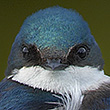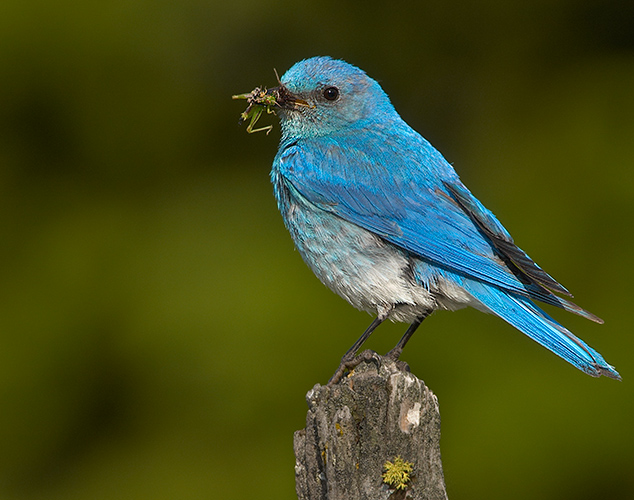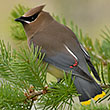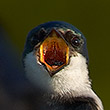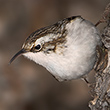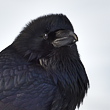
Availability: Undetermined - Enquiries?
In the Field
Brown Creeper on Brown Background. Findlay Creek, BC, Canada. March 4, 2007.
Most interior designers should probably spend a little time studying the colour combinations found in nature. Regardless of your belief system, it's no accident that wildlife manages to be so well colour coordinated with their habitat. So, either the Creator was a colour specialist, or evolution did an amazing job of shaping the colour patterns and behaviour of organisms to match their environment!
I've been asked a number of times about which of my camera's metering system I prefer. This image provides a fine example of why I almost always use my camera's multi-segment metering system (in my case Nikon's Matrix Metering - Canon users have an equivalent called Evaluative Metering). Although not perfect, the Matrix Metering system on my camera is very accurate and I know that even if it misses by a little bit, it's going to be darned close. With this image, I had a total of between two and three seconds from seeing the bird to snapping the image. I had NO time to do anything other than focus and shoot. While I had to do a little adjusting of the exposure after the fact (check under the "At the Computer" tab if you're interested), this tweaking was well within what could be accomplished during the RAW conversion process.
This image is interesting to me for one more reason - I have said many times (including several times on this website) that I don't really like, and rarely use, teleconverters. Well, the day I shot this image I decided to force myself to use a teleconverter all day. I used the teleconverter with an extremely high-quality prime lens and as it turns out, I DID get a few acceptably sharp images (including this one). I did, of course, stop the lens down to ensure I was shooting through the "best" part of the glass (and the teleconverter). I'm still not a big fan of teleconverters, but I think I may start carrying one a little more commonly (but only when I have high-quality prime lenses with me!).
Behind the Camera
Brown Creeper on Brown Background. Findlay Creek, BC, Canada. March 4, 2007.
Digital Capture; Compressed RAW (NEF) format; ISO 200.
Nikon D2X with Nikon 300 mm f/2.8G ED-IF AF-S VR with Nikon TC-14E II 1.4x teleconverter (630 mm equivalent with digital conversion factor) supported on Gitzo G2220 tripod with Really Right Stuff BH-55 ballhead and Wimberley Sidekick; SB-800 flash (fill) with Better Beamer Flash Extender mounted on Really Right Stuff flash bracket. VR turned to "On" and in "Normal" mode.
1/60s @ f7.1; no compensation from matrix-metered exposure setting; balanced i-TTL flash exposure with -0.33 stop compensation on SB-800.
At the Computer
Brown Creeper on Brown Background. Findlay Creek, BC, Canada. March 4, 2007.
RAW Conversion to 16-bit TIFF, including first-pass sharpening, exposure compensation, and tone curve adjustment, using Phase One's C1 Pro. Multiple RAW conversions (one at an exposure compensation of -0.7 stops, one at an exposure compensation of +0.2 stops) to extend dynamic range of captured image, in this case both to darken the background and tree the bird was perched on and to retrieve shadow detail on lower breast of bird (adjacent to the tree).
All further digital correction on 16-bit TIFF file using Adobe's Photoshop CS2, including compositing and masking of various exposure versions, selective saturation enhancement, selective Gaussian Blur, additional tone curve adjustment, and selective sharpening for web output.
Conservation
Brown Creeper on Brown Background. Findlay Creek, BC, Canada. March 4, 2007.
Ten percent of the revenue generated by this image will be donated to Wildsight.
Species Status in Canada*: This species is not designated as at risk.
The Brown Creeper (Certhia americana) is a holarctic species with a very wide distribution in North America, including almost all of the US and much of Canada. Yet the bird is uncommon everywhere and because of its plumage and behaviour it is very inconspicuous. While most keen birders will have seen one or more of them, most North Americans have likely never seen one. As shown in this image, the Brown Creeper has a thin and strongly decurved bill. The Brown Creeper forages by creeping along the bark of large trees, normally circling a tree in an upward spiral, much like it is ascending a spiral staircase.
This Brown Creeper was photographed in the Columbia Valley of the East Kootenays. While this species is not considered at risk in any way, their nesting area is threatened due to cutting of forest habitat. Many ecosystems within the Columbia Valley face development pressure, including pressure from logging operations. Wildsight is an effective conservation organization that protects biodiversity and promotes sustainable communities in Canada's Columbia and Rocky Mountains. Support for Wildsight, through donation or becoming a member, will help ensure that they remain effective in their efforts to conserve threatened or endangered species and ecosystems.
*as determined by COSEWIC: The Committee on the Status of Endangered Wildlife in Canada



















